Curator’s Favorite: The Jessie Willcox Smith Collection
The Jessie Willcox Smith collection of photographs is an often overlooked treasure of the Print and Photograph Department. Smith (1863-1935) was a renowned illustrator at the turn of the 20th century best known for her children’s book and magazine illustrations. Containing approximately 1,400 photographic prints, this collection includes portrait photographs taken by Smith as well as snapshots of her close friends.
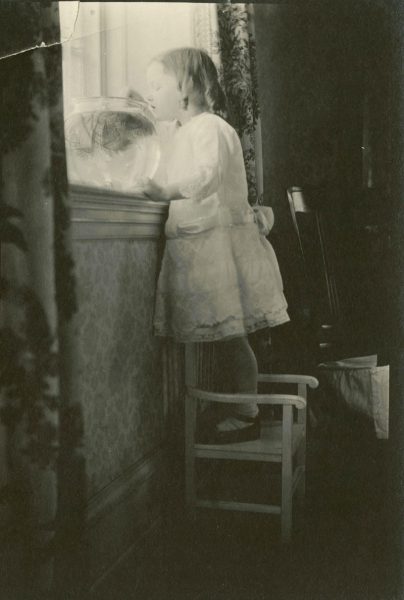
The portrait above of Alice Vaux was evidently the basis of Smith’s illustration titled “The Goldfish” in Ada M. Skinner’s A Child’s Book of Modern Stories (1935).
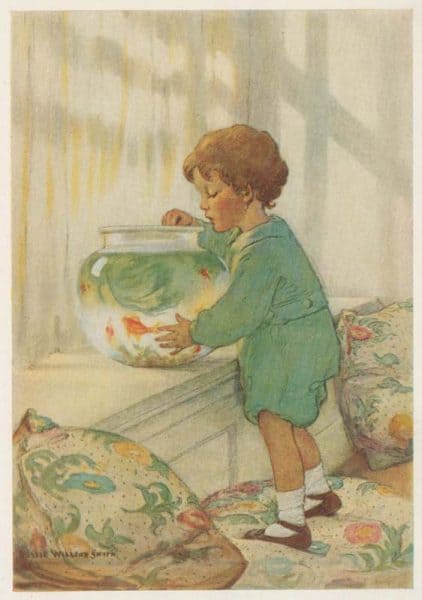
“The Goldfish” in Ada M. Skinner’s A Child’s Book of Modern Stories (1935).
Smith sometimes used her photographs of children as studies for her artwork. The portrait above of Alice Vaux was evidently the basis of Smith’s illustration titled “The Goldfish” in Ada M. Skinner’s A Child’s Book of Modern Stories (1935).
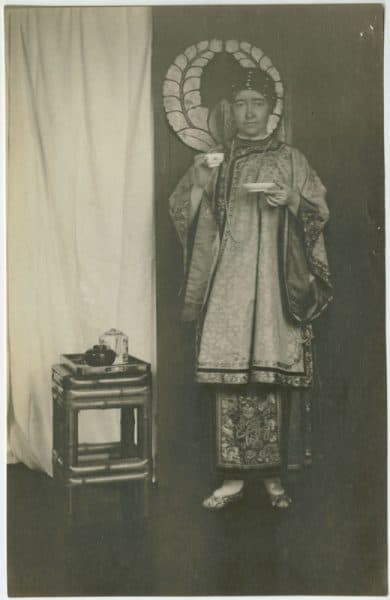
Several of the portraits may have been taken for Elizabeth Shippen Green’s projects, as seen by the above image. Found within a folder titled “Elizabeth in Chinese Costume,” Green poses holding a teacup and saucer.
The collection includes photographic portraits Smith took of her fellow artist housemates, Elizabeth Shippen Green (1871-1954) and Violet Oakley (1874-1961). Green, Oakley, and Smith were collectively known as the Red Rose Girls. Their professor and fellow illustrator, Howard Pyle, gave them the nickname because they all lived at the Red Rose Inn in Villanova, Pennsylvania. This trio of artist-illustrators influenced each other’s work while studying and living together.
Several of the portraits may have been taken for Elizabeth Shippen Green’s projects, as seen by the above image. Found within a folder titled “Elizabeth in Chinese Costume,” Green poses holding a teacup and saucer.
The photograph below of Jessie Willcox Smith seated in front of an unidentified man in costume was clearly used as a study for one of Elizabeth Shippen Green’s illustrations. Featured in Tales from Shakespeare by Charles and Mary Lamb (1922), the image is titled “Do You See Nothing There? Nothing at All, Yet All That I See” and is found within the “Hamlet, Prince of Denmark” chapter.

Jessie Willcox Smith seated in front of an unidentified man in costume was clearly used as a study for one of Elizabeth Shippen Green’s illustrations. Featured in Tales from Shakespeare by Charles and Mary Lamb (1922), the image is titled “Do You See Nothing There? Nothing at All, Yet All That I See” and is found within the “Hamlet, Prince of Denmark” chapter.
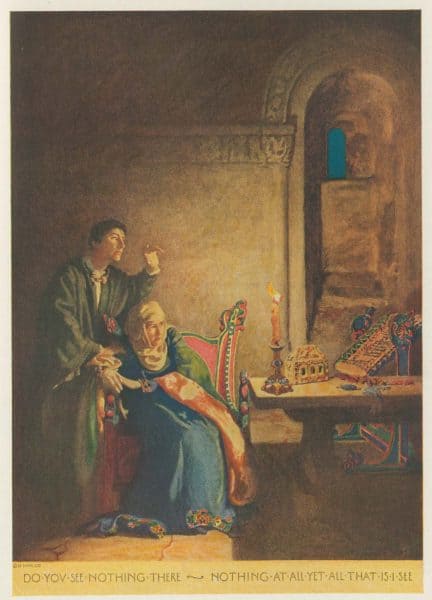
Featured in Tales from Shakespeare by Charles and Mary Lamb (1922), the image is titled “Do You See Nothing There? Nothing at All, Yet All That I See” and is found within the “Hamlet, Prince of Denmark” chapter.
The snapshot collection features candid photographs of Smith’s housemates, including the image below of Violet Oakley and Henrietta Cozens (ca. 1864-1940). Cozens lived with the Red Rose Girls and tended to the overall upkeep of the house and gardens. Oakley and Cozens enjoy a cup of tea together while sitting on the terrace at Cogslea with the family dog, Prince, seated behind Cozens.

Oakley and Cozens enjoy a cup of tea together while sitting on the terrace at Cogslea with the family dog, Prince, seated behind Cozens.
After leaving the Red Rose Inn the Girls moved into Cogslea, in Mount Airy on the edge of the Wissahickon section of Fairmount Park. Based on an acronym of the foursome’s last names, the Girls liked to refer to themselves as the “Cogs” family. Smith often photographed her subjects in the surrounding grounds of the estate, as seen below. Shown in the garden, the subject stands in front of the pergola next to a fountain. The next portrait after captures a glimpse of the Cogslea estate.
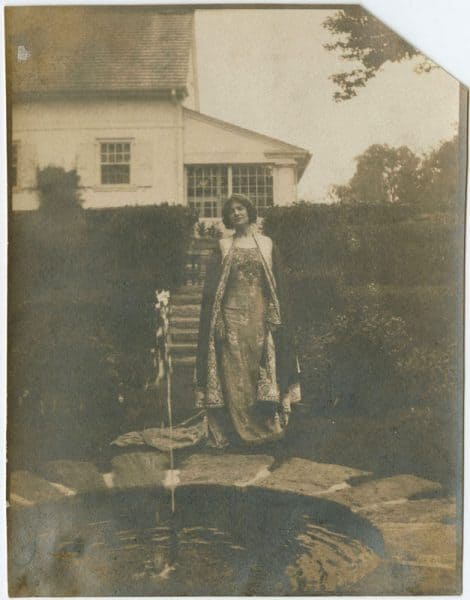
A glimpse of the Cogslea estate.

Shown in the garden, the subject stands in front of the pergola next to a fountain (bottom left).
The Library Company has several books illustrated by Jessie Willcox Smith, as well as the books mentioned above, within its collection. We welcome researchers to stop by and see if they can identify photographs that were used as studies for her illustrations.
Nicole Joniec
Print Department Assistant and Digital Collections Manager
Reference:
Alice A. Carter, The Red Rose Girls: An Uncommon Story of Art and Love. New York: Harry N. Abrams, 2000.
